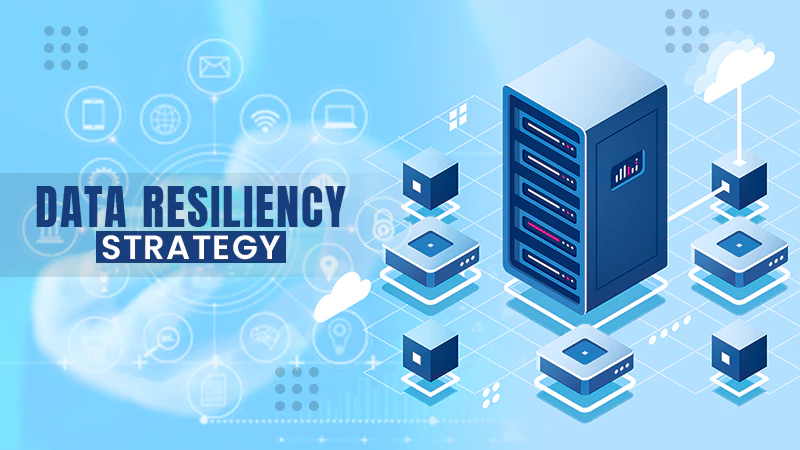Managed Detection and Response (MDR) services allow organizations to quickly and effectively respond to cyber security threats. Unlike other forms of cybersecurity, MDR Underdefense solutions are not fully automated. They involve both cloud-based software and human teams to investigate and repair damage caused by hackers and malware. Managed detection & response services software alone cannot adapt to ongoing attacks, and few organizations have the IT staff with the threat analysis expertise to deal with the constant threats posed by cybercriminals. MDR solutions typically include the assistance of qualified experts as part of a cyber security service package.
Automated functions monitor systems and generate alerts while experts analyze attacks. When MDR Underdefense’s automated capabilities detect malware, the system initiates measures or other security processes to mitigate the cyber-attack. This step is followed by communication with experts.
In addition, MDR service providers typically have their technology stacks on the customer’s premises. These technologies cover areas such as network services, cloud services, and endpoint services to protect your organization’s data and resources. These cyber-attack mitigation techniques can help protect your organization’s data. However, different situations require different tools. There are various MDR services, each with its own MDR tools and protocols, but they share common characteristics.
The Phenomenon of Network Security
Network security protects various operations, including Internet access, IP address filtering, Internet content filtering, and mail services for root domains. Security tools used include VPN termination, firewalls, and intrusion prevention systems. Third-party cloud security protects software, platforms, and infrastructure available on the Internet that may be vulnerable to cyberattacks. Underdefense services cover desktop PCs, mobile phones, laptops, tablets, and servers. Each of them can be considered an endpoint. Use integrated, automated tools to reduce the time and energy spent on protecting and managing endpoints.
Myths About Small Business Security
Often small business owners think they are too small to be targeted by hackers. Unfortunately, small businesses have limited protections, making them prime targets for low-level cybercriminals. Learn about specific tactics for hijacking networks and systems. Some cybercriminals work with specific lists and find vulnerabilities regardless of the organization’s size.
Risk Reduction
Cyber Threat Protection defines organizations’ procedures and policies to prevent data breaches and security issues. Your mitigation policy should also limit the damage from a security attack. Cyber threats often come from external attackers who aim to gain some benefit through their criminal activities.
Using a Firewall
Unfortunately, a traditional firewall is no longer enough. However, next-generation firewalls (NGFWs) can now resist new forms of cyberattacks. NGFW is an essential first step in securing the business environment, and this is done to prevent or at least deter hackers. Underdefense best practices and policies are designed and implemented to protect your organization’s data and methods.
One of the easiest ways to protect yourself from the threat is to use a method to prevent password theft of employee or company accounts. Passwords can be obtained in many ways, including eavesdropping, phishing, malware, and just plain human laziness.
Mitigating Cyber Threats with Underdefense Tools
Cybercriminals can gain access to your network in several ways. Threat protection focuses on preventing attackers from browsing your system and accessing the most sensitive data on your network. Advanced attacks may try to hide regular activity to gain access to valuable data or stay on a plan long enough to lock it and demand a ransom. An attacker could continue the attack without warning if the vulnerability mimics authorized activity.
MDR Underdefense solutions combat such threats by shutting down affected systems or devices and isolating them from the network to prevent file corruption, keep business systems online and avoid costly downtime. Underdefense uses various tools and services to limit attacks on the business environment. Subsequently, the MDR team takes other measures to prevent threats, such as closely tracking and monitoring attack patterns and identifying stolen usernames and passwords to prevent further access.
Managed detection and response services using log files to record violations. This allows log-based detection and blocking of malware sources to limit the damage. Other steps in the threat prevention process may include closing specific ports and servers, redesigning website home pages, and changing passwords.
Assessment of Potential Cyber Risks
Identifying threats is primarily a process of investigating typical cyber attacks and preparing for their occurrence. If your organization has an employee or security team, you must inform them about new malware and cyber threats. With the MDR solution, the Underdefense vendor’s internal employees are up-to-date and prepared for new cyber threats; This way, you can be sure that your cybersecurity team is up-to-date on the latest trends.
Basic Functions
Detecting cyber threats before they cause damage is a top priority. Fortunately, several types of security automation can help you stay productive and address potential threats. Antivirus software is one of the essential protections worth investing in. Other key threat detection capabilities supported by MDR include user behavior analysis, threat penetration testing, and automated monitoring systems.
Analysis of Consumer Behavior
The expected behavior is recorded and used as a template for comparison with current behavior. Detected behavior includes user login and logout, data types, and physical user location. Anomalous behavior becomes more visible, making it easier for security analysts to detect various cyber anomalies. Security professionals proactively scan computer systems and networks for vulnerabilities such as authentication errors, unlocked software, and more. Companies can improve cybersecurity with an integrated threat detection system that combines automated services and human knowledge. A managed detection and response platform can help organizations monitor web traffic, monitor device activity, and performance, and report potential cyber anomalies when they are detected.
Quickly detecting and responding to attacks is critical to mitigating cybersecurity risks. Underdefense is a results-based MDR service that combines the people, data, and technology to counter malicious cyber attacks to identify and stop threats on your organization’s networks and endpoints before they cause harm or failure.
Improved Visibility of Threats
Knowing what activity is happening on your organization’s network makes it impossible to tell whether your systems and data are at risk. Ensure complete visibility of all cyber threats. The threat landscape is constantly changing, so it’s essential to make sure your detection capabilities are improving. Underdefense uses the latest threat analysis and security tools to help organizations respond to current and emerging cyber threats.







